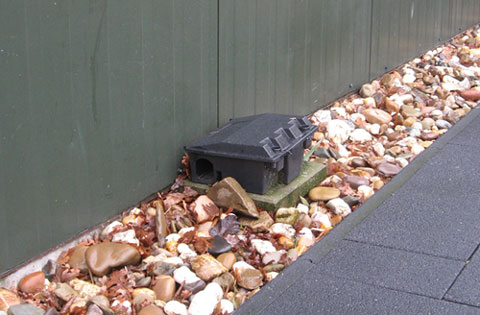



Effective Rodent Control on the Breeder Farm and Hatchery
Advice on setting up a programme to control rate and mice from Gerd de Lange of Pas Reform.Rodents (rats and mice) are documented carriers of Salmonella spp. and therefore present a serious concern for public health. A review of Meerburg et al. (2007) showed infection rates in rodent populations ranging from 0 - 77 per cent.

An entire breeder flock or hatchery can be contaminated by the presence of a single infected rodent, thus posing a risk to the rest of the food chain. Besides the danger of infection, rodents cause damage to buildings, electrical lines and water pipes, thereby affecting production and profitability. For these reasons, an effective rodent control program is essential.
Rodent control begins with getting to know your enemy. Rats are intelligent, social animals that live in colonies of several hundred individuals. These rodents have a strong tendency to burrow, especially into soil or under secure coverings such as piles of stones or rubbish - and they prefer to move under cover of darkness. They have a range of 100 meters plus - and they breed quickly. A healthy female can easily produce 5 litters per year, each of 8 - 10 pups, with offspring attaining sexual maturity in 8 - 12 weeks. As many as one third of the females in a population may be pregnant at any one time. And because of their agility and their ability to squeeze through small openings, it is very difficult to keep them out of poultry houses, feed stores and hatcheries. The range of mice is much smaller (5 meters) than for rats. However as mice reach sexual maturity 42 days after birth, populations grow much faster than those of rats. Being so small they are very easily carried, unnoticed, in for example egg boxes. They can enter a building through gaps as small as 6 mm (the diameter of a pencil!).
Rodent infestation can quickly take hold without even seeing a single animal, because their nocturnal habits tend to keep them away from human eyes. If a single rat is seen during daytime, there is already a sizeable infestation. To control rodents requires constant attention - and it is common for breeder farms and hatcheries, especially in the case of larger operations, to place responsibility for rodent control in the hands of a specialized pest control company.
An effective rodent control program involves three areas of activity:
- prevention - do not attract rodents.
- monitoring - looking for signs of rodent presence (seeing no rodents does not mean they are not there!).
- control - the use of rodenticides to eliminate the pests and prevent populations from thriving.
Advice
- Keep the area around the breeder houses and hatchery clean and tidy. Avoid decorative shrubs within 1 meter of buildings and cut grass regularly.
- Do not attract rodents with food sources, such as chicken feed, hatchery waste and leftovers from canteens.
- Make the houses rodent proof: cover ventilation openings with wire netting and ensure there are no openings or gaps under doors.
- Monitor at weekly intervals for signs of rodents, such as: runs, smears, droppings, urine odour, gnawings, foot prints, holes and burrows and uptake from bait boxes.
- Eliminate rodents by using an effective rodenticide mixed with an attractive bait.
- Place sufficient purpose-designed bait boxes at carefully chosen points where rodents pass or gain access regularly.
- Monitor uptake from bait boxes and add or refresh rodenticide as required, to avoid resistance or ‘bait shyness’. With preferred ‘slow-kill poisons’, rodents must ingest some of the poison daily for several days.
- Change the rodenticide at regular intervals to avoid resistance and ‘bait shyness’.
- Consider using a specialised company to carry out the rodent control program. An effective rodent control program requires knowledge, experience and consistency.
July 2012








